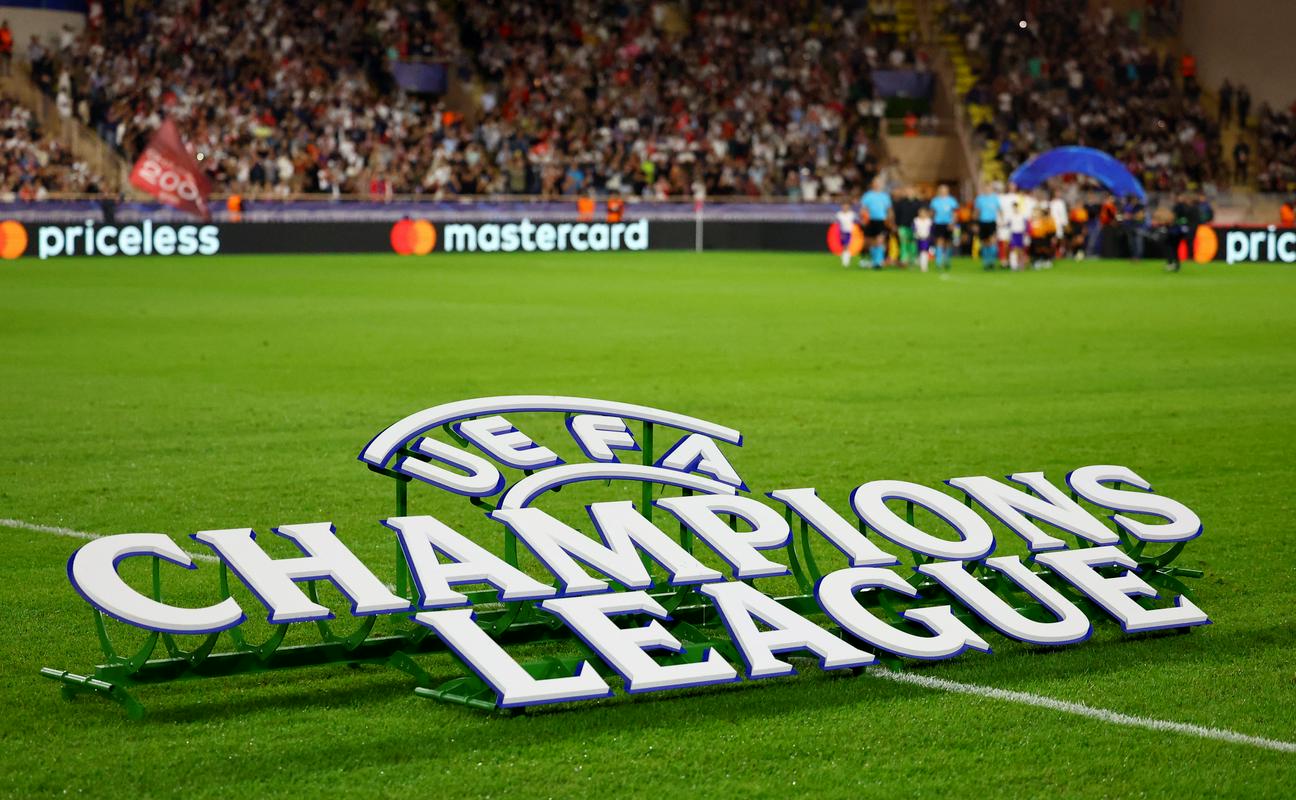
But let's go in order, let's start with the positive changes brought about by the merger of all clubs into a single league, which is without a doubt a revolutionary idea. Previously, each team met three clubs in the group stage (or 9.7 percent of all remaining participants), but now eight (22.9 percent), which increases the variety of the competition.
It also increases the value or meaning of each match. In the previous system, after the fourth round (which produced the same pairings as the round before) it was often quite clear who had already advanded to round of 16 or was close to it. This meant tactics and not always the most interesting matches.
With a unified ranking, every win, every point and, finally, the difference in goals is important. The relatively convincing victory of Sporting over Lille with 2:0 currently places the Portuguese only in tenth place and thus only knockout phase play-offs. Of course, this is only the first round, the extra seven games will ensure that they end up being the best quality team at the top, there is no doubt about that, but I can't help but enjoy the unpredictability and dynamism of the unified table.
(I'm not even starting to think about the calculations, finding scenarios and writing articles about the developments that will have to happen in the last round to advance to the first 8 or 24 teams, which in fact will be even more relevant in the Conference League due to the Slovenian presence).
These are only pluses. What about the minuses? A look at the "start list", where as many as 22 clubs come from the top five leagues (England, Spain, Germany, Italy and France), and only 14 from the rest of Europe. The percentage of the elite thus exceeded 60 for the first time (exactly 61.1), which is the most in the history of this competition, and this leads me in the direction of thinking about Superliga in UEFA guise. Let's look at the number of these clubs and the percentage since the 1992/1993 season, when the Champions League started.
Naslov infografike: Liga prvakov top 5 lig in ostali
Note: By clicking on an individual column or dot on the curve, you get exact information about the number of clubs or the percentage.

I would like to point out a few vintages:
− 1995: Expansion from eight clubs to 16.
− 1998: Expansion to 24 clubs.
− 2000: Additional expansion to 32 clubs.
− 2025: Transformation into today's single league system with 36 clubs.
There is a clear trend brought about by the expansion: not only are there more clubs for the elite, their share is also increasing on average and is now close to two thirds.
Any major rearrangement brings big changes. In its original form, the Champions League was, of course, a cup competition, which also allowed for several surprises. Thus, less than a third of the winners came from outside the environment of the top five leagues (in the 80s we even saw two winners from the eastern part of Europe). The share of semi-finalists was (from today's perspective an incredible) 42 percent.
What happened then? Let's look at the table.
| Phase | Semi-final | The final | The winner | |||
| Period | Top 5 | Rest | Top 5 | Rest | Top 5 | Rest |
| 1956−1992 | 86 (58%) | 62 (42%) | 51 (69%) | 23 (31%) | 26 (70%) | 11 (30%) |
| 1993−1999 | 20 (71%) | 8 (29%) | 12 (86%) | 2 (14%) | 6 (86%) | 1 (14%) |
| 2000−2024 | 97 (97%) | 3 (3%) | 49 (98%) | 1 (2%) | 24 (96%) | 1 (4%) |
Since there have been 32 clubs in the Champions League, only once has a team from outside the elite five leagues won the title, and that was Porto in 2004. The others almost never come close. Since 2000, 97 clubs (and the same percentage) from the top five have played in the semi-finals, and the remaining three are represented by the previously mentioned Porto (2004), PSV (2005) and Ajax (2019), which, at least historically, are not small clubs, since they have all already won the most important European competition.
Each change thus brings less variety and surprises, which we can only watch in foreign cups all year long (last year we finally got a taste of this in the Slovenian cup as well).
Surely someone reading these lines (and numbers) asked themselves "And? What's wrong with that? In the end, the best wins anyway."
That too is of course ... true. Most people like to watch quality football, a fairly reliable guarantee for this at least usually comes from quality football players, who of course usually gather in the best clubs that also have the most money. The new format of the Champions League will bring (at least exposed) even more such clashes, more excitement, more highlights and more profit. That's exactly why I have associations with the Superliga. Well, at least the Champions League is still opening the door for little ones to step in.
The nostalgic in me still wants them to not always just stand there, wants unpredictability, wants David to be able to defeat all the Goliaths of this world. Well, at least once every XY years. As Leicester managed to do in the most affluent environment almost a decade ago ...




































































Komentarji so trenutno privzeto izklopljeni. V nastavitvah si jih lahko omogočite. Za prikaz možnosti nastavitev kliknite na ikono vašega profila v zgornjem desnem kotu zaslona.
Prikaži komentarje